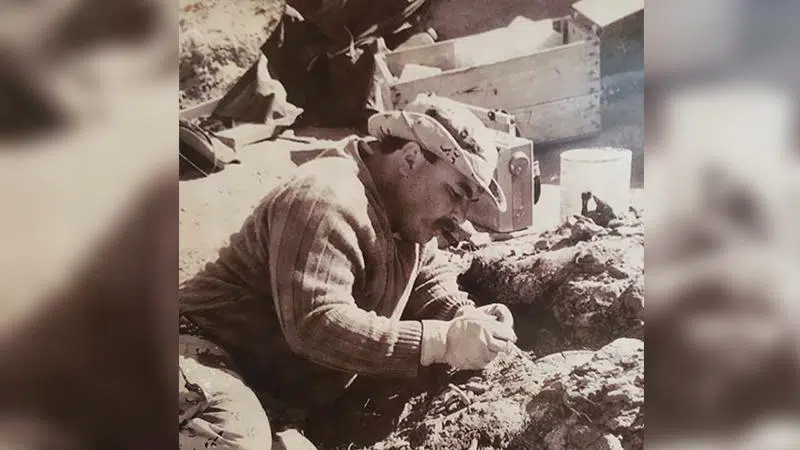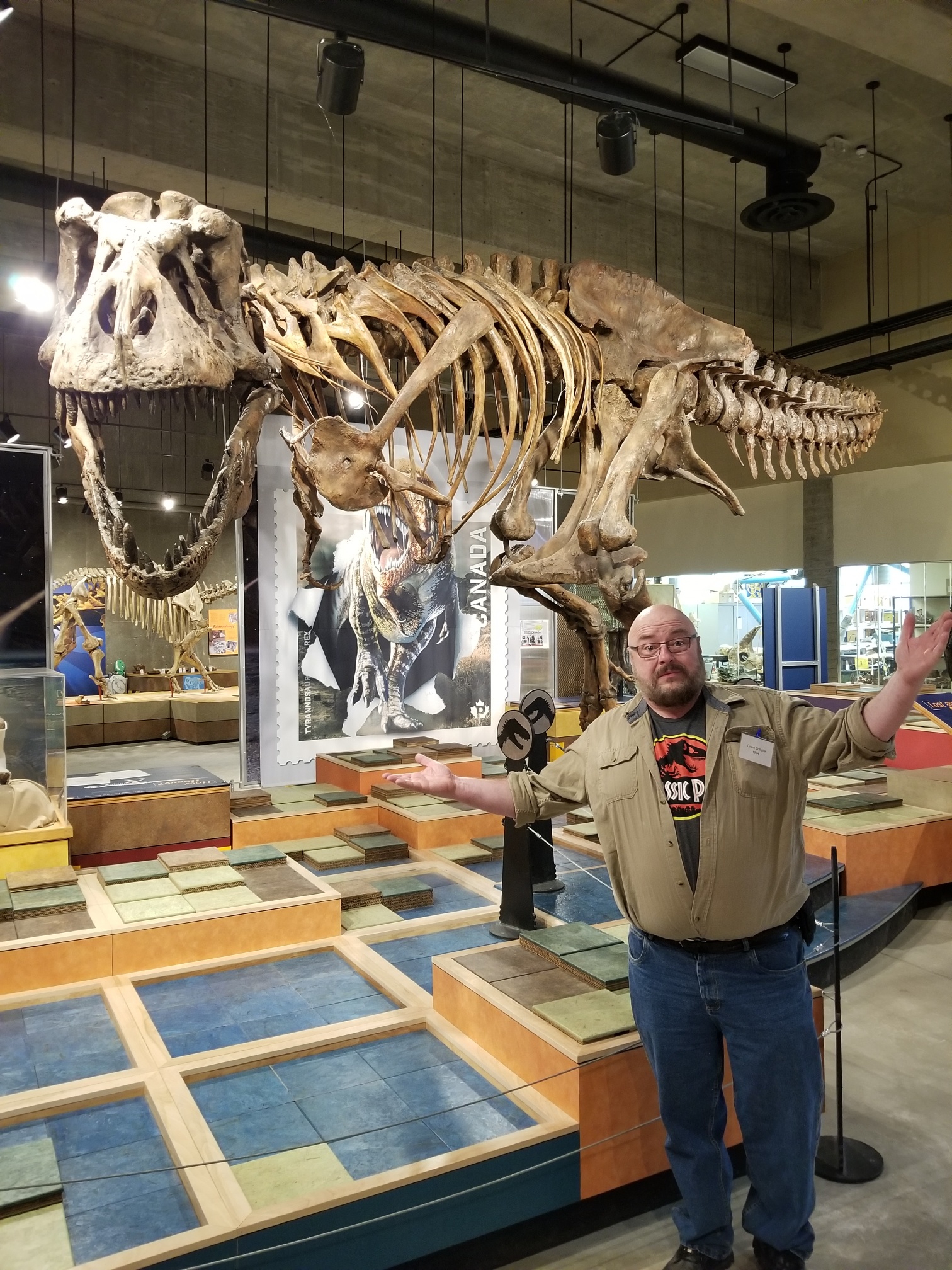
Local paleontologist recalls dig for Scotty the T-Rex 25 years later
It was April 1994 when Grant Schutte and paleontologist Tim Tokaryk, while on a road trip to Drumheller, decided to stop by a ranch outside of Frontier in southern Saskatchewan to investigate the site where some bones a principal in Eastend had unearthed in 1991.
After getting permission to explore, the pair started to dig around in the dirt. After about 20 minutes Schutte said the tip of a tooth emerged from the ground.
The pair cleared off the tooth and Tokaryk looked at Schutte and said, “it would be really neat to find another tooth right here.”
They cleaned away the dirt once again and out popped another tooth.



